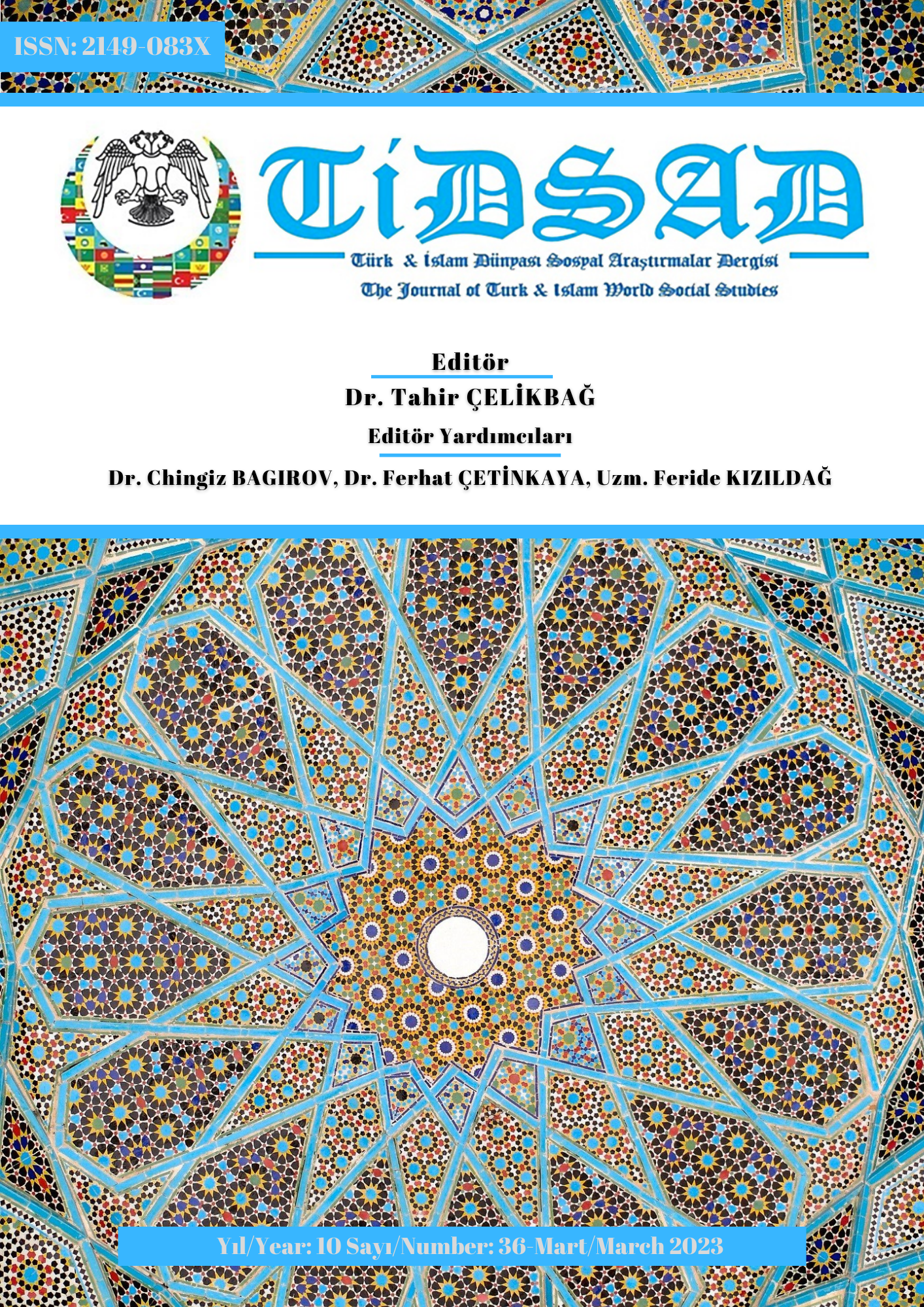Author :
Abstract
Ziyadeleşmiş, artmış anlamına sahip olan müstezâd kelimesi, 14. yüzyıldan 19. yüzyıla kadar Türk edebiyatında bir nazım biçimi olarak yer almıştır. Türk edebiyatına Arap ve Fars edebiyatlarından intikal etmiş olan müstezâd, klasik üslupta yazılmış bir şiirin mısralarına belirli kurallar çerçevesinde kısa mısralar (ziyâde) eklenmesi sûretiyle elde edilir. 19. yüzyıl itibarıyla kuralları esnetilmiş ve değişikliğe uğramış olan bu tür; vezin, kafiye ve şekil bakımından türlü değişikliklere uğratılmıştır. Nihayetinde “serbest müstezâd” olarak anılmış ve hece veznine de uygulanarak serbest nazma adeta yol açmıştır. Çalışmaya konu olan müstezâd örnekleri ise, daha önce emsaline rastlanmamış bir deneme olarak nitelendirilebilir. Abdurrahman Sâmî Paşa’nın, oğlu Necib Bey tarafından 1873-74 yıllarında derlenen, bazı nazım ve nesirlerinin yer aldığı İnşâ-yı Sâmî adlı eserinde yer alan üç adet tezkire sûretinin müstezâd şeklinde yazıldığı anlaşılmaktadır. Bu makale ile 19. yüzyılda geleneksel tarzda kendini göstermiş olan dönüşüm ve arayış atmosferinin, dîvân şiirinde olduğu kadar inşâ türünde de söz konusu olduğu, bahsedilen mektuplar vasıtasıyla ortaya konmaya çalışılmıştır. Çeviri yazısı verilen mektupların esere ait görüntüleri ise çalışmanın sonunda ek olarak sunulmuştur. İnşâ ve münşeat kavramlarının bu yüzyılda muhteva itibarıyla değişikliğe uğradığı bilinse de nesirde müstezâd daha önce örneğine rastlanmamış biçimsel bir deneme sayılabilir.
Keywords
Abstract
The word mustezad, which means to multiply, to increase, took place as a verse form in Turkish literature from the 14th century to the 19th century. The mustezad, which has been transmitted to Turkish literature from Arabic and Persian literature, is obtained by adding short verses (ziyade) to the verses of a poem written in classical style within the framework of certain rules. As of the 19th century, the rules of this genre were relaxed and modified, was subjected to various changes in terms of meter, rhyme and form. Eventually it came to be known as free mustezad and also being applied to syllabic verse, formed a way to free verse. The examples of mustezad that are the focus of this study, can be qualified as an unprecedented endeavor. It is acknowledged that the three tezkire transcripts of Abdurrahman Sami Pasha in his work İnşâ-yı Sâmî, which was compiled by his son Necib Bey in 1873-74, includes some of his poems and prose, were written in the form of mustezad. With this article, it has been tried to reveal through the aforementioned letters that the atmosphere of transformation and search, which manifested itself in the traditional style in the 19th century, is also in question in the type of construction as well as in divan poetry. The images of the work of the letters whose translation fonts are given are presented as an appendix at the end of the study. Though it is known that the concepts of insa and munseat underwent changes in terms of content in this century, the mustezad in prose can be considered as unprecedented stylistic experiment.





